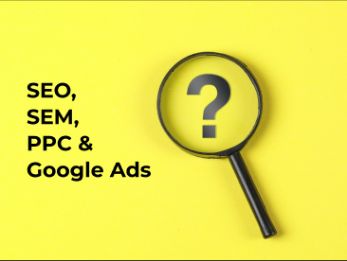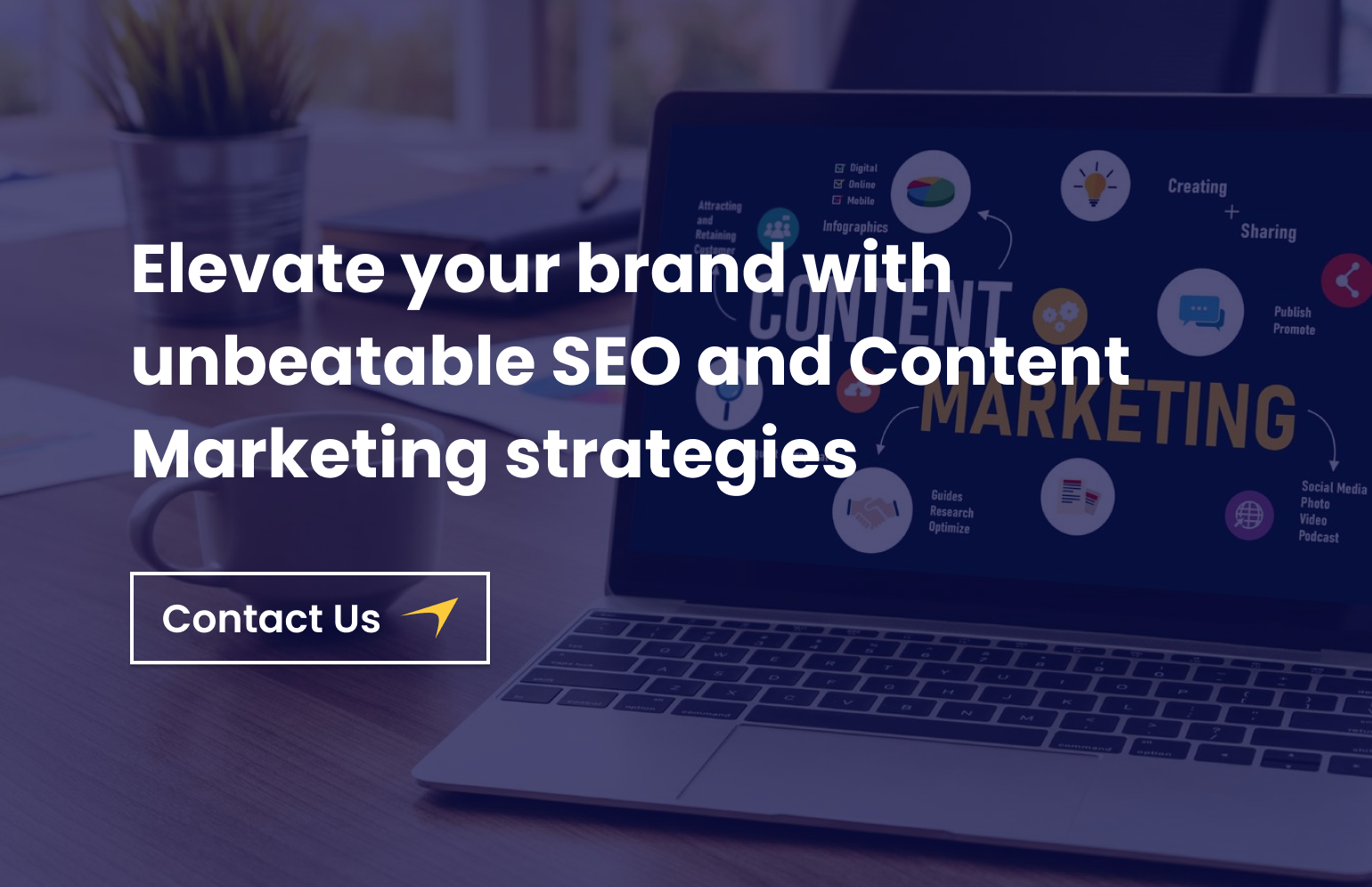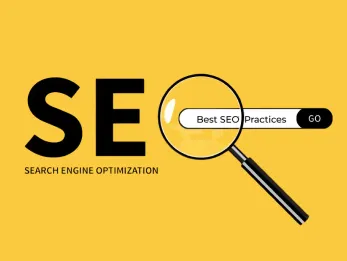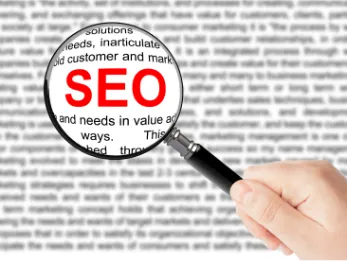What’s the difference between SEO, SEM, PPC & Google Ads?
07 Jun 2022

Table Of Contents
1. Introduction
2. Reason To Choose Digital Marketing
3. Search Engine Optimization Explained
4. Search Engine Marketing: An Overview
5. Understanding Pay-Per-Click
7. Conclusion
Introduction
Visibility is the key to success! You read that right, and in today's digital world, getting noticed online is important for the growth and success of your brand! But there are a few terms, such as SEO, SEM, PPC & Google Ads, which many people can get confused about! But to drive success, it's important for you to understand these nuances of online marketing.
These terms are quite similar to navigating a maze where every path promises visibility, but they are all different from each other. And to succeed online, you people need to understand all these terms and how they function! Join us as we break down SEO, SEM, PPC, and Google Ads, making digital marketing easier to understand! Now, you must get ready to boost your online presence and outshine the competition!
In this article, we’ll provide you with a high-level overview of the differences between the above-stayed terms. As best practices shift or change over time, standard definitions of industry terms advance, and new acronyms are formulated oftentimes. For many people, it's quite easy to get confused or caught up in the technicalities of these specific terms.
So, Why Digital Marketing?
Here's a question for you - Have you Googled yourself recently?
How do you rank on search engines when you search or browse for those ever-important keywords that exemplify your brand? Remember, it does not matter how incredible or unique your brand or your products & services are; your business/company will never reach a height of success if no one is aware or mindful of it. And, the huge majority of people begin their search online by utilizing a search engine like Google.
While several evaluations turn up slightly distinct outcomes on the significance of digital marketing, one thing is obvious - if your company is not listed on page one of SERPs, i.e. search engine ranking pages, there is less than a one percent likelihood that somebody will connect with your brand, get to know about your business, or click on your business's website.
At the same time, over 30 percent of clicks will go to websites that are listed on the first page of SERPs. Having that in mind, your digital marketing strategy is an integral part of the success of your business.
If you are thinking about one single strategy that fits all, then you must know that there is no such one-size-fits-all digital marketing strategy. Your digital marketing strategy team should be prepared to help you figure out what is best for your business and goals & objectives.
In this article, let’s break down some of the most generic terms you often hear when someone talks about digital marketing and how they can play a vital role in helping you. Established on your certain goals/objectives and budget, you may wish to incorporate all of them into your across-the-board strategy or pick & choose.
Let's get started!
1. Search Engine Optimization (SEO)
SEO, also known as Search Engine Optimization, is an exceptionally complex, intricate, and ever-changing strategy. Just as you believe that you have learned it and figured it all out, algorithms change unexpectedly, and so does your strategy. Yes, it's that complicated. Many companies still believe that loading & inserting their websites with some crucial keywords will do the job—and that completely may have been the case in 1998, at the inception of Google search. But today, assuring top search rankings is now an ongoing, multi-faceted, and main part of your all-around marketing strategy integrating (among other stuff):
- Technical SEO — All the technical elements of your website that eventually make it more noticeable in searches, encompassing site architecture & speed, sitemaps, and link configuration.
- Off-Page — Elements of your website that help in creating its ranking and popularity, comprising link building, reviews, and guest posting.
- Content Optimization — Everything on your page that holds it at the top of search engine result pages involves keywords, content, and usability.
Having a proper digital marketing strategy makes sure that you are repeatedly receiving promising results without tumbling into some widespread mistakes and ambushes, such as a lack of internal links, not having a sitemap, or concentrating on improper keywords or traffic.
2. Search Engine Marketing (SEM)
Specifying precisely what SEM or search engine marketing consists of can be a little tricky, as there are many different definitions around depending on who you ask.
But we have tried to explain in really simple terms for you to understand - Search Engine Marketing, also known as SEM, can be defined as a set of tools, methods, and strategies that help in optimizing the visibility of websites and also assist in rank higher in the search engine result pages. In short, the purpose of SEM is to attain better search engine placement on Google and other parallel sites.
Normally, Google search pages and other sites exhibit two kinds of results:
- Organic results: To know which results to display, the search engine utilizes an algorithm that notifies you which websites are best to react to a particular inquiry. Also, Google's algorithm is established on relevance (web content) and authority (links from other pages). The set of methods and tools that are used to place organic listings is called SEO (Search Engine Optimization).
- Paid results: Unlike organic listings, here, the advertiser must pay a certain fee for each click it gets. To drive traffic to the website by purchasing ads in search engines, you will have to turn to search engine advertising solutions, such as Google Ads. This particular system is also known as PPC, i.e. Pay Per Click or CPC, i.e. Cost Per Click.
Search Engine Marketing encompasses both SEO methods and search engine advertising. Nevertheless, most marketers utilize SEM to pertain entirely to search engine advertising or paid results.
When it comes to SEM and PPC, they are both paid methods for boosting your placement in SERPs. The major difference is that SEM focuses specifically on marketing through search engines. PPC can fall under SEM; for instance, if you purchase a PPC ad on Google search, that’s also SEM.
3. Pay-Per-Click (PPC)
PPC, which is also known as pay-per-click, is a type of online advertising model in which an advertiser pays a publisher each & every time an advertisement link is being “clicked” on by the users. On the other hand, PPC is known as the CPC, i.e. Cost-Per-Click model. The pay-per-click model is proposed mainly by search engines like Google and social media networks such as Facebook. Google Ads, Facebook Ads, and Twitter Ads are the most outstanding & prominent settings for PPC advertising.
PPC is literally what it sounds like and is a critical part of steering traffic to your website. There are numerous ways that PPC advertising functions; these include:
- Flat rate — Paying a flat charge for every click.
- Bid-based — Proposing a bid for advertising space (the highest number they are ready to pay), and each time a user triggers the ad slot, an automated auction arises, and the winner earns the ad slot.
While there are many strategies for this type of bid-based PPC, two of the most common are:
- Cost Per Click (CPC)— This sets a fee per click you are not ready to go over.
- Return On Ad (ROA) — Sets a target return on conversion (set as a percentage; for example - if you are attempting to make 2 dollars for every dollar you invest in an advertisement, your target ROA is a total of 200%).
4. Google Ads
Google Ads (Earlier known as Google Adwords) can be defined as Google’s pay-per-click (PPC) advertising solution, which enables businesses to bid on keywords for an opportunity to display ads in Google search results. With Google ads, you can tweak your ads at any moment to reach a certain group of people (maybe by interest, geographical region, etc.) or endorse a special deal or product. This flexibility can be an outstanding aid for small businesses that can't update their website frequently to reflect sales, publicity, advertising, or seasonal offerings.
Presently, there are 6 factors that actually define an Ad Rank —
- Ad quality & landing page experience
- Maximum Bid
- Competitiveness
- User search context (For instance - location, device, search intent, and time of the day)
- The expected consequence of ad formats & extensions
- Ad rank must be higher than the verge
This can make your ads appear on top search results if the Ad Rank is quite high. Currently, there are 4 available slots on top of the search results, and additional slots are available on the bottom part of the search results pages. One of the main components of getting Google ads to rank higher is to optimize the ad quality. One can even monitor a metric named Quality Score, a perfect combination of ad quality metrics from one-time performances.
Conclusion
Well, it's clear now that all these essential tools are similar to a compass for businesses who want to achieve success via online marketing! Understanding how to navigate this digital landscape is not just helpful but necessary in today's time.
Learning about digital marketing and these tools can help businesses, big or small, to stand out in the crowd, connect with their target audience, and thrive online. Whether it is about optimizing for search engines or mastering paid advertising, success comes from understanding each tool and using it strategically.
The marketing atmosphere of search engines is developing fast, and with that, so are best practices and terminology. We hope that this blog post has helped you understand the terms and has made the differences between SEO, SEM, PPC, and Google Ads more precise.
Here's to a digital marketing journey loaded with clicks, conversions, and ongoing growth for your business!
Key Takeaways
- Mastering SEO, SEM, PPC, and Google Ads is crucial for navigating the online world effectively and creating an online presence for your brand.
- Tailoring effective strategies to each tool helps in boosting your brand’s online visibility, audience engagement, and business growth.
- Learning the nuances of digital marketing is the key to standing out in the competitive online arena.
- Success lies in a harmonious blend of search engine optimization, search engine marketing, paid advertising, and strategic utilization of Google Ads.
- Equip your business with the knowledge to lead a successful online presence and stay ahead of your competition.
Author








